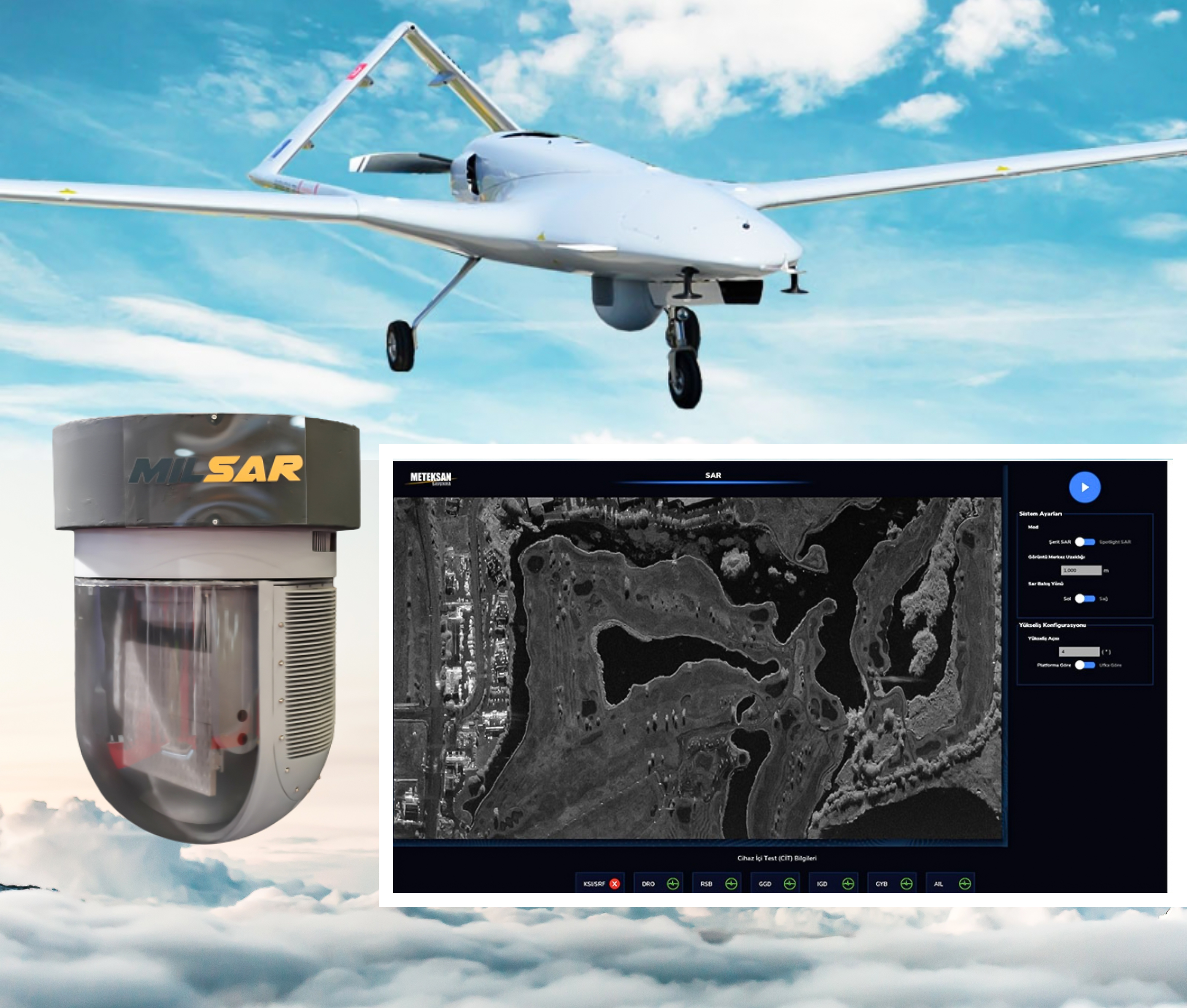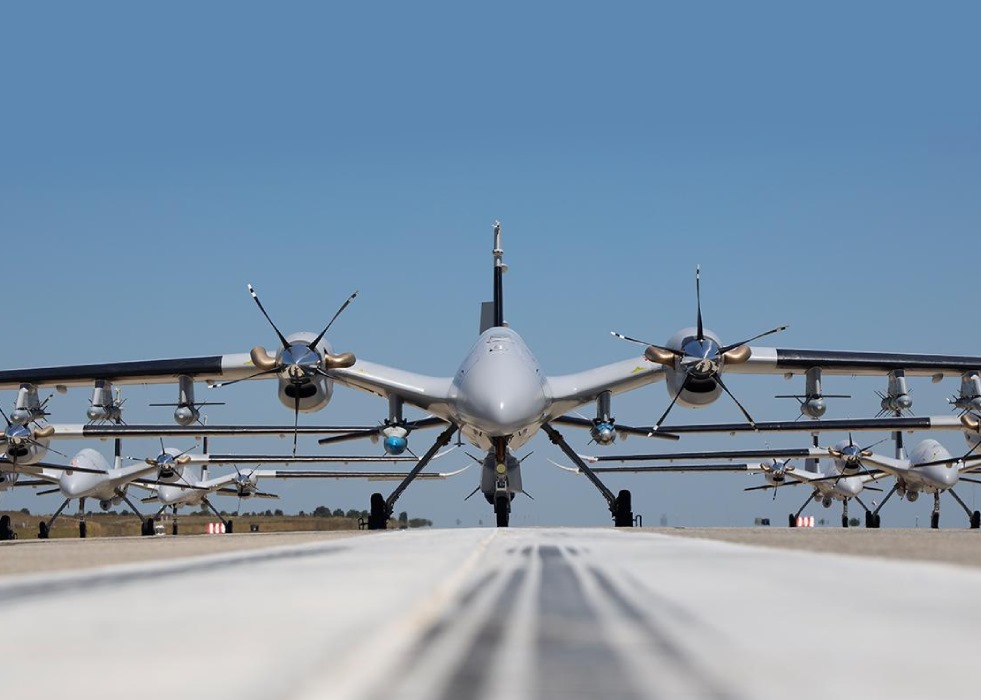the drone has to approach the ship with more speed in rough weather, right? I'd like to see these trials evolve to be tested in adverse conditions and see how it performs.That was what i expected at the first landing, kudos to the guy who designed the gears and suspension, eventhough it has landed rather harshly (like marine fighters do), it didn't bounce back. We won't know the limit until the nose landing gear breaks apart.
I see no reason for them not to make a modular arrest gears and minimize this landing to 10-20 meters just after the aft elevator. The UAV aims far after the elevator and right side of the island for landing in most of the times likely to avoid wake of the island.
You are using an out of date browser. It may not display this or other websites correctly.
You should upgrade or use an alternative browser.
You should upgrade or use an alternative browser.
Did I see wrong or TB3 stopped in 30 meters or so in 2nd landing?
Let's do this!
With this landing, we've got more stuff to talk about, like the serial take off and landings and how they're going to be managed by the ground stations and how many we can have up and flying bout for missions.
wise questions bro
nobody has done it befor so nobody has the answers at least clear answers but may be we can make a guess about the answer of one of your questions

-sure ı could be very wrong but seems to me that 4 TB3s on the deck (inluding one potantial extra TB3 on top of the elevator ) can be the max number of TB3 ready to be launched within a brief period of time
-Further, longer endurance of drones can/will be used for increasing the number of airborn drons
Last edited:
I hope they will put a radar on TB3 using it like a AWACS, it will give a boost to our navy. If it can fly 24 hours, put 4 of them to the ship. A range of 150km enough.
YeşilVatan
Contributor
My amateur guess is it would require a seperate, highly advanced pod. I highly doubt it can be done, but hey Leonardo put AESA on a friggin TB-2 so it's possible I guess.I hope they will put a radar on TB3 using it like a AWACS, it will give a boost to our navy. If it can fly 24 hours, put 4 of them to the ship. A range of 150km enough.
My amateur guess is it would require a seperate, highly advanced pod. I highly doubt it can be done, but hey Leonardo put AESA on a friggin TB-2 so it's possible I guess.
We have TB2 with radar operating for the navy..

Meteksan Defence MILSAR SAR/GMTI Radar Provides Outstanding Capabilities to Tactical UAVs
MILSAR generate radar images up to 30cm resolution from 27km.
 www.defenceturkey.com
www.defenceturkey.com
YeşilVatan
Contributor
That's rather low performance compared to what Anadolu will require. At least that was my assumption, now I realize I might be wrong on that.We have TB2 with radar operating for the navy..

Meteksan Defence MILSAR SAR/GMTI Radar Provides Outstanding Capabilities to Tactical UAVs
MILSAR generate radar images up to 30cm resolution from 27km.www.defenceturkey.com
We're going to be needing some solid defense for Anadolu, even if we use tb3 for surveillance only for the time being. Until we have gathered enough experience. If tb3 is going to be fitted with a targeting pod to steer missiles towards objective. Would trg230, trg300 that we spoke about in a different thread be a good solution. But we'd need Corvettes/frigates with vls right?
Nah mate, they wouldn't be any good in this case. They are rather simple rockets, not suited to hitting moving targets from a ship, I believe. Best way to protect Anadolu will be getting our frigates around it.We're going to be needing some solid defense for Anadolu, even if we use tb3 for surveillance only for the time being. Until we have gathered enough experience. If tb3 is going to be fitted with a targeting pod to steer missiles towards objective. Would trg230, trg300 that we spoke about in a different thread be a good solution. But we'd need Corvettes/frigates with vls right?
With the current engine configuration, a capability is being developed that can take a payload of over 250 kilograms to an altitude of 25,000 ft and keep it there for at least 15-16 hours. No matter how we look at it, this is an achievement, but how this potential can be utilized depends on the intelligence of the staff shaping the navy's doctrines.
Any ship that does not have a short-to-medium range air-engagement capability other than PMDS or CIWS (almost all coastal defense ships, fast attack crafts, missile boats, patrol boats and corvettes), if an air-launched variant of SUNGUR is certified, it can have an effective engagement capability against all types of ASW and attack helicopters as well as all propeller UCAVs. If a suitable operational concept can be created, the lightweight A-A missiles it will carry may also be used against asymmetric (I mean, the way of the Houthis' attack on ships) missile attacks. Apart from these, it may have deep air support capability, albeit limited, with sea-skimming short-range lightweight cruise missiles if developed and mini-loitering/kamikaze systems with a very flexible mission capability such as Kemankeş-II. Apart from this, it has a very important potential as MPA and ISTAR. In recent years, there have been major advances in highly energy-efficient synthetic aperture air-to-surface radar systems. In an amphibious task group, ISTAR capabilities alone have the potential to help this program achieve its goals. Comparing this UCAV to fighter jets is completely stupid, yes, but it is an important asset within its own operational concept.
Any ship that does not have a short-to-medium range air-engagement capability other than PMDS or CIWS (almost all coastal defense ships, fast attack crafts, missile boats, patrol boats and corvettes), if an air-launched variant of SUNGUR is certified, it can have an effective engagement capability against all types of ASW and attack helicopters as well as all propeller UCAVs. If a suitable operational concept can be created, the lightweight A-A missiles it will carry may also be used against asymmetric (I mean, the way of the Houthis' attack on ships) missile attacks. Apart from these, it may have deep air support capability, albeit limited, with sea-skimming short-range lightweight cruise missiles if developed and mini-loitering/kamikaze systems with a very flexible mission capability such as Kemankeş-II. Apart from this, it has a very important potential as MPA and ISTAR. In recent years, there have been major advances in highly energy-efficient synthetic aperture air-to-surface radar systems. In an amphibious task group, ISTAR capabilities alone have the potential to help this program achieve its goals. Comparing this UCAV to fighter jets is completely stupid, yes, but it is an important asset within its own operational concept.
Last edited:
Those are GPS/INS guided munitions.Would trg230, trg300 that we spoke about in a different thread be a good solution.
It is indeed possible to hit moving targets with just GPS guided munitions, but it needs the presence of a platform in the air, constantly tracking the target with radar/visual means and continuously updating the coordinates on the munition via datalink.
The Americans managed to hit moving naval targets with regular JDAM's via such means as part of the AMSTE program. And that was before the F-35 was ready!
I think that TB-3's can pull such a trick with a honkin' AESA array on it.
But if we're not talking about moving targets, but stationary or semi-stationary would the solution of using TB3 as a "spotter/targetter" be valid way of utilizing the UCAV ? I was thinking that you could have a huge commercial container ship sail with a lot of loitering ammo/TRG230/trg300 and be like a mothership to launch them on targets highlighted by TB3, locking gps/coordinates etc. and then boom.
The commercial ship is just an example of something big enough to have many rockets/loitering ammo.
The commercial ship is just an example of something big enough to have many rockets/loitering ammo.
You dont need TB-3 providing guidance to hit stationary targets with GPS-guided artillery rockets.But if we're not talking about moving targets, but stationary or semi-stationary would the solution of using TB3 as a "spotter/targetter" be valid way of utilizing the UCAV ? I was thinking that you could have a huge commercial container ship sail with a lot of loitering ammo/TRG230/trg300 and be like a mothership to launch them on targets highlighted by TB3, locking gps/coordinates etc. and then boom.
The commercial ship is just an example of something big enough to have many rockets/loitering ammo.
Other than that, solid idea.
While this idea is wild and lures many people into such concepts, just as soldiers posing as civilians to launch an attack is being a war-crime (or against Geneva Conventions), a commercial ship is being utilized for military purposes or a military ships disguised as a commercial liner falls within the same category of crimes. It will likely follow some consequences that a nation may not bear (through ban of shipping, etc.)But if we're not talking about moving targets, but stationary or semi-stationary would the solution of using TB3 as a "spotter/targetter" be valid way of utilizing the UCAV ? I was thinking that you could have a huge commercial container ship sail with a lot of loitering ammo/TRG230/trg300 and be like a mothership to launch them on targets highlighted by TB3, locking gps/coordinates etc. and then boom.
The commercial ship is just an example of something big enough to have many rockets/loitering ammo.
Is this a new UCAV? It looks very similiar to Akinci but Akinci is already on that picture.{#Radar}
The MURAD 100-A AESA Nose Radar offers a game-changing solution for fighter jets and UAVs with its superior performance in air-to-air and air-to-ground engagements.
EDIT:
This one?

Baykar Works on a Larger Akıncı UCAV with TEI Engines | TURDEF
Baykar CEO Selçuk Bayraktar stated that the firm is working on a larger AKINCI UCAV with engines from TEI.
The first illustration may be a 3d model used twice in a slightly sloppy illustration. However, we can now say that it is now confirmed for the heavy-duty drone that will fly with the turboprop to be derived from the TS-1400, as you shared. As far as I can follow and feel, we will see many new concepts in 2025 and in a sense, there will be another strategic expansion in the scale of Turkish drone systems.Is this a new UCAV? It looks very similiar to Akinci but Akinci is already on that picture.
View attachment 72389
EDIT:
This one?

Baykar Works on a Larger Akıncı UCAV with TEI Engines | TURDEF
Baykar CEO Selçuk Bayraktar stated that the firm is working on a larger AKINCI UCAV with engines from TEI.turdef.com






